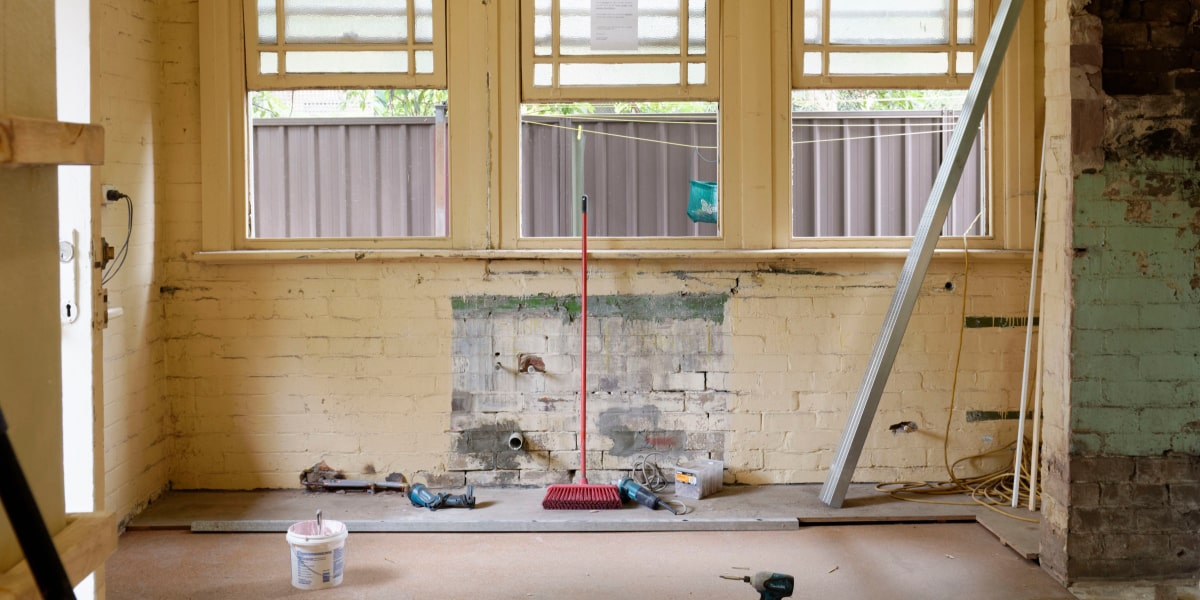5 Common Findings when Restoring Historic Homes
Renovating historic homes has a lot of upsides.
You get the quality of construction from years ago, along with the gorgeous built-ins, hardwood, and design features unique to your home’s style. Perhaps your home even has some sort of historic significance or great stories that have been passed down for years, making it even more attractive.
But taking what’s old and making it new again isn’t always easy. Here are 5 things commonly found when restoring an historic home:
Old Plumbing & Electrical Systems
Your old home may have been cosmetically updated over the years, but many historic homes still have their original (or at least older) plumbing or electrical in place.
The consequences of this finding can be expensive, as modern housing codes will require much of those systems to be torn out and redone. This change could mean ripping out walls and floors, digging up your backyard, and replacing large appliances.
Depending on the scope of the rest of your renovation, these jobs may be easier – and less expensive.
If, for example, you’re already re-doing the bathrooms and kitchen, much of your plumbing will already be exposed. This makes it easy for workers to tear out the old and replace it with the new.
Unsafe Materials
Back when many older homes were built, it was common to use materials such as asbestos in wall insulation or lead paint.
But these materials are now known to be unsafe and, if they’re in your home, must be replaced.
Sometimes, materials such as asbestos can be left in place if they won’t be exposed or disturbed by your renovations or everyday life.
Choosing to remediate these issues can be costly, but in the long run they’re worthwhile projects to undertake for the health and safety of your family and any future inhabitants.
Like plumbing and electrical, the cost of removing lead paint or asbestos may depend on your other renovation plans. If you’re tearing down walls anyway, then the remediation is less of an “extra project” and more an additional cost.
However, expect that you will have to pay a specialized contractor to remove the hazardous substance, which can be pricey. The hourly cost for these specialists, though, is a drop in the bucket to ensure your family’s health and safety.
Unavailable Materials
Not only has home design changed in the last several decades, but so have the fixtures that we use in our everyday lives.
Older bathtubs, for example, were much more narrow and had smaller profiles than modern tubs.
If you’re looking for an exact replacement, you may not be able to find a bathtub that fits the exact dimensions left in your bathroom. This could cause some issues with your room layout or design plans, or you can check salvage yards and resale stores to see if they happen to have what you’re looking for.
Be ready to pay a little more for accurate reproductions or salvaged pieces, as they’re more difficult to find and specialized.
Outdated Layouts
Older homes are notorious for being laid out very differently than modern, open-floor plan homes.
There are long, narrow corridors, bathrooms far apart from logical living spaces, and tiny rooms.
This can make updating things for your modern tastes and needs challenging. After all, fitting a king-sized mattress up a narrow, curved staircase is a workout as well as a puzzle.
You may have to make due with a smaller, closetless room by moving your clothing to another room, or bringing in some armoires.
If you really want to update the home’s layout, it’s best to hire an architect, structural engineer, or someone who will be able to tell you what changes are possible without compromising the integrity of your home’s structure.
Bad Work
While you can run into shoddy work in newer homes, the chances that your historic home had an overzealous, budget-conscious owner at some point is pretty high.
This could mean that you’ve got an expensive problem on your hands, such as improperly installed electrical or plumbing work. Or, it could just be a minor nuisance that’s an easy fix for a skilled contractor.
Either way, it’s best to work closely with a contractor knowledgeable in renovating historic homes so you can get the job done correctly, safely, and for the least amount of money in the long run.
Renovating Historic Homes for over 30 Years
At Irvine Construction, we understand how complicated restoring an historic home can be. There are a whole lot of unknowns hiding behind the walls and under floorboards, and that can cost your a lot of time and money.
For more than 30 years, we’ve helped clients throughout Maryland and Virginia bring their old homes to their former glory, whether that’s a period-accurate restoration or a modern upgrade. Find out what Irvine Construction can do for your project – Schedule a consultation today!
